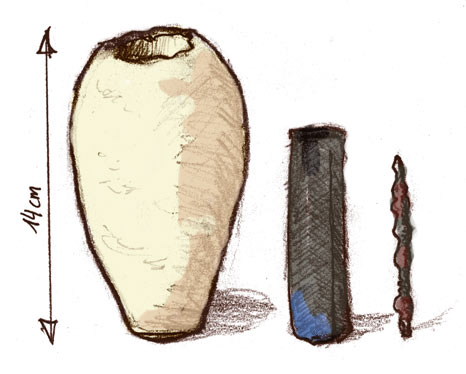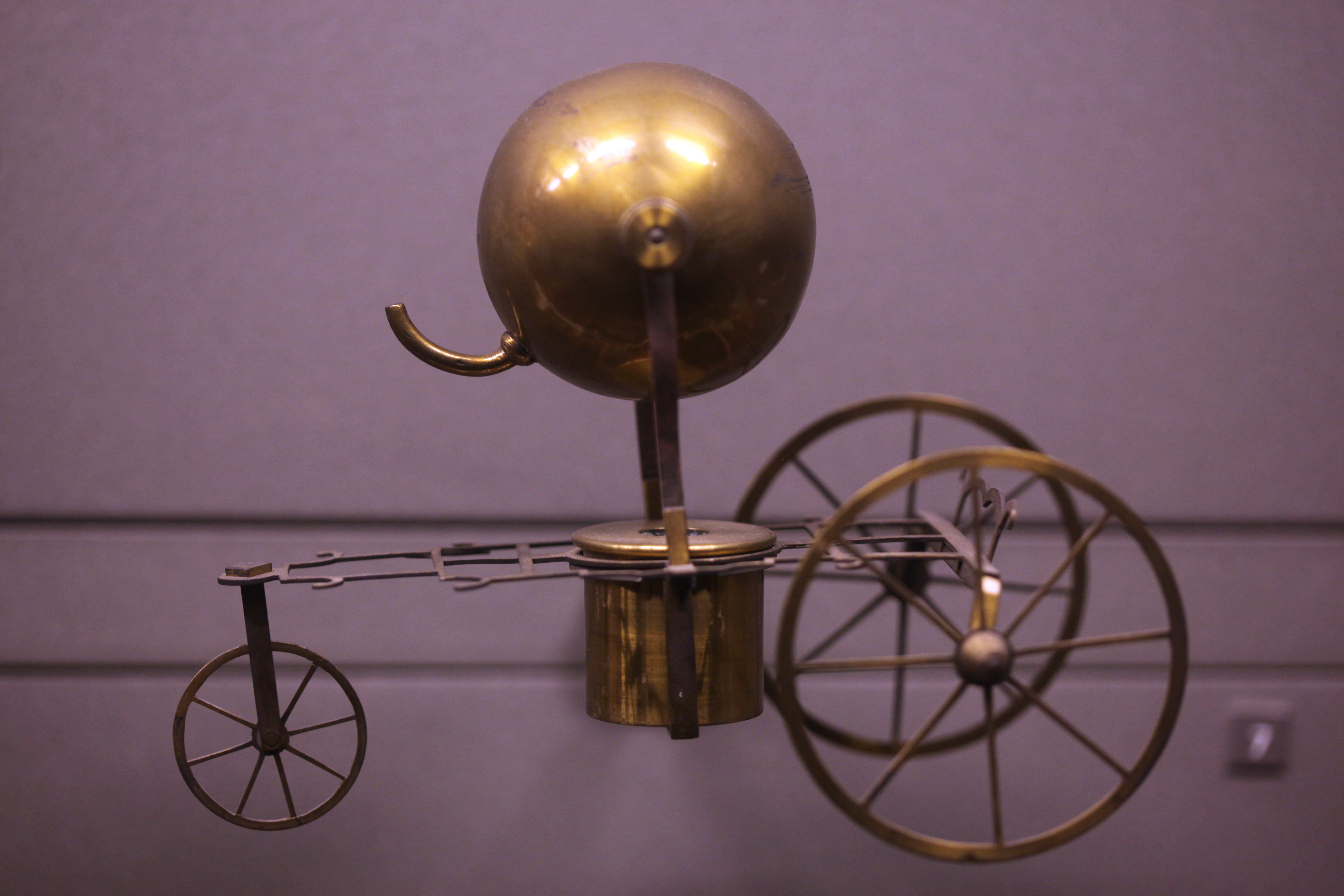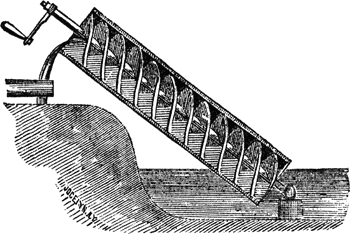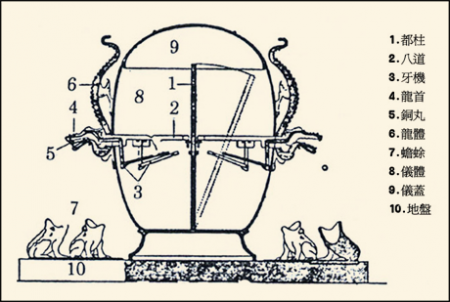10 Famous Things That Were Invented Way Earlier Than You Think
Throughout history, humanity's inventive spirit has continuously pushed the boundaries of what is possible. Often, we attribute certain inventions to specific eras, imagining them as products of their time. However, a closer examination reveals that many of these innovations have roots that stretch far deeper into the past than commonly believed. This article embarks on a fascinating journey through time, uncovering the surprising histories of 10 such inventions. By exploring these stories, we not only gain a deeper appreciation for human ingenuity but also challenge our understanding of how and when these technological breakthroughs occurred. From ancient civilizations to the cusp of the modern age, the tales of these inventions reveal a rich tapestry of creativity and foresight that transcends the confines of time. As we delve into each section, we will unravel the layers of history, revealing the unexpected origins and developments that have shaped the world as we know it today.
1. The Antikythera Mechanism: Ancient Greece's Astronomical Computer

The Antikythera Mechanism, often dubbed the world's first analog computer, was discovered in a shipwreck off the Greek island of Antikythera in 1901. Dating back to around 100 BC, this intricate device was used to predict astronomical positions and eclipses for calendrical and astrological purposes. Its complexity and precision astounded scientists, challenging the notion that such sophisticated technology could only emerge in more modern times. The mechanism's intricate system of gears and dials demonstrates a deep understanding of mathematics and astronomy, reflecting the advanced scientific knowledge of the ancient Greeks. This remarkable artifact not only highlights the ingenuity of its creators but also provides insight into the technological capabilities of ancient civilizations. The Antikythera Mechanism stands as a testament to the enduring human quest for knowledge and the ability to harness it in innovative ways.
2. The Baghdad Battery: Ancient Electricity in Mesopotamia

The discovery of the Baghdad Battery in the 1930s added a new chapter to the history of electricity. These clay jars, dating back to the Parthian or Sassanid period (approximately 150 BC to 650 AD), contained a copper cylinder and an iron rod, suggesting they might have been used to generate an electric current. While the exact purpose of these devices remains a topic of debate, some theories propose they were used for electroplating or as a primitive form of battery. The existence of such technology in ancient Mesopotamia challenges the narrative that electricity was a discovery of the modern era. The Baghdad Battery invites us to reconsider the technological capabilities of ancient societies and the possibility that they harnessed electricity in ways we are only beginning to understand. This enigmatic artifact serves as a reminder that the past may hold secrets that continue to elude our grasp, waiting to be unraveled by future discoveries.
3. Roman Concrete: The Enduring Legacy of Ancient Construction

Roman concrete, known as opus caementicium, was a revolutionary building material that contributed to the durability and longevity of Roman architecture. Unlike modern concrete, Roman concrete utilized volcanic ash, lime, and seawater, resulting in a chemical reaction that strengthened the material over time. Structures such as the Pantheon and the Colosseum stand as enduring testaments to the effectiveness of this ancient technology. Recent studies have shown that Roman concrete's unique composition allows it to resist environmental degradation, a feature that modern concrete lacks. This ancient innovation not only highlights the Romans' advanced engineering skills but also offers valuable insights for contemporary construction practices. By examining the secrets of Roman concrete, we can learn how to create more sustainable and resilient structures, bridging the gap between ancient wisdom and modern technology.
4. The Aeolipile: The Forgotten Steam Engine of Hero of Alexandria

The aeolipile, often considered the world's first steam engine, was invented by Hero of Alexandria in the first century AD. This simple yet ingenious device consisted of a spherical vessel mounted on a pair of tubes, which expelled steam to create rotational motion. Although it was primarily used as a novelty or toy, the aeolipile demonstrated the potential of steam power long before the Industrial Revolution. Hero's invention laid the groundwork for future developments in steam technology, which would eventually transform industries and societies. The aeolipile serves as a reminder that the seeds of innovation often lie dormant, waiting for the right conditions to flourish. By exploring the history of this early steam engine, we gain a deeper appreciation for the visionary minds that paved the way for modern technological advancements.
5. The Water Mill: Harnessing Nature's Power in Antiquity

Water mills have been used since antiquity to harness the power of flowing water for various purposes, from grinding grain to sawing wood. The earliest known water mills date back to the Greek and Roman periods, with evidence of their use in the first century BC. These early machines utilized the kinetic energy of rivers and streams, transforming it into mechanical power that could be used for a wide range of applications. The widespread adoption of water mills marked a significant shift in human society, as they provided a reliable and efficient source of energy that reduced the reliance on manual labor. The development of water mills highlights the ingenuity of ancient engineers and their ability to harness natural forces for practical purposes. By examining the history of water mills, we can better understand the evolution of energy technology and the ways in which it has shaped human civilization.
6. The Archimedes Screw: Ingenious Water Lifting from the Ancient World

The Archimedes screw, attributed to the ancient Greek mathematician Archimedes, is a device used for raising water from a lower to a higher elevation. This simple yet effective mechanism consists of a helical screw inside a hollow tube, which, when turned, lifts water along the spiral. The Archimedes screw has been used since the third century BC for irrigation, drainage, and other applications, demonstrating the ingenuity of ancient engineers in solving practical problems. The enduring utility of this invention is evident in its continued use in modern times, where it is employed in various industries, from agriculture to wastewater management. The Archimedes screw exemplifies the timeless nature of innovative solutions and the ways in which ancient technologies can continue to benefit society today. By exploring the history and applications of this remarkable invention, we gain a deeper appreciation for the creativity and resourcefulness of ancient minds.
7. The Compass: Navigating the Seas Long Before the Age of Exploration

The compass, a crucial navigational tool, has a history that stretches back to ancient China. The earliest compasses, dating to the Han Dynasty (around 206 BC to 220 AD), were made from lodestone, a naturally magnetized mineral. These early devices were used for divination and geomancy, but their potential for navigation was soon realized. By the Song Dynasty (960-1279 AD), the compass had become an essential tool for maritime exploration, allowing sailors to navigate the seas with greater accuracy and confidence. The invention of the compass marked a significant advancement in human exploration, enabling the expansion of trade routes and cultural exchanges across vast distances. The history of the compass underscores the interconnectedness of technological innovation and human exploration, highlighting the profound impact that a single invention can have on the course of history. By examining the development and evolution of the compass, we gain insight into the ways in which ancient technologies have shaped our modern world.
8. The Seismoscope: Ancient China's Earthquake Detector

The seismoscope, invented by the Chinese polymath Zhang Heng in 132 AD, was an early device for detecting earthquakes. This ingenious invention consisted of a large bronze vessel with eight dragon-shaped tubes, each holding a small ball. When an earthquake occurred, the vibrations would cause a ball to drop from the mouth of one of the dragons, indicating the direction of the seismic activity. The seismoscope demonstrated a sophisticated understanding of seismic phenomena and provided a means of detecting earthquakes long before modern seismology was developed. Zhang Heng's invention highlights the advanced scientific knowledge of ancient China and their ability to create practical solutions to natural challenges. The seismoscope serves as a testament to the enduring human quest to understand and mitigate the forces of nature. By exploring the history of this remarkable device, we gain a deeper appreciation for the innovative spirit that has driven scientific discovery throughout the ages.
9. The Automaton: Mechanical Marvels of the Ancient World
Automata, or self-operating machines, have fascinated humans for centuries. These mechanical marvels, which mimic the actions of living beings, have a history that dates back to ancient Greece and China. The earliest known automata were created by inventors such as Hero of Alexandria and the Chinese engineer Yan Shi, who constructed intricate devices powered by water, steam, or clockwork mechanisms. These early machines captivated audiences with their ability to perform complex tasks, from playing music to serving drinks. The development of automata reflects the enduring human fascination with the concept of artificial life and the desire to replicate natural processes through mechanical means. By examining the history of automata, we gain insight into the technological advancements and cultural influences that have shaped the development of robotics and automation in the modern world. The story of these ancient machines reminds us of the timeless allure of innovation and the boundless possibilities of human creativity.
10. The Flush Toilet: Sanitation Solutions from Ancient Civilizations
The flush toilet, often considered a modern convenience, has origins that trace back to ancient civilizations. The earliest known examples date to the Indus Valley Civilization (circa 2500 BC), where sophisticated drainage systems and flush toilets were used to maintain sanitation in urban areas. Similar systems were later developed by the Minoans and Romans, who constructed public latrines with running water to carry waste away. These early sanitation solutions highlight the importance of hygiene and public health in ancient societies, as well as their ability to develop effective infrastructure to support large populations. The history of the flush toilet underscores the significance of sanitation technology in shaping human civilization and improving quality of life. By exploring the development of these early systems, we gain a deeper understanding of the challenges and innovations that have driven the evolution of sanitation technology over the millennia.
Timeless Innovation and the Endless Quest for Knowledge
The stories of these 10 inventions reveal a rich tapestry of human ingenuity that transcends the boundaries of time and place. From ancient Greece to China and beyond, these technological marvels demonstrate the enduring human quest for knowledge and the ability to harness it in innovative ways. By examining the surprising histories of these inventions, we gain a deeper appreciation for the interconnectedness of human innovation and the ways in which ancient technologies have shaped our modern world. These stories remind us that the seeds of innovation often lie dormant, waiting for the right conditions to flourish. As we continue to explore the past, we uncover new insights and perspectives that challenge our understanding of history and inspire us to push the boundaries of what is possible. The journey of discovery is never-ending, and the lessons of the past continue to guide us as we navigate the challenges and opportunities of the future.







